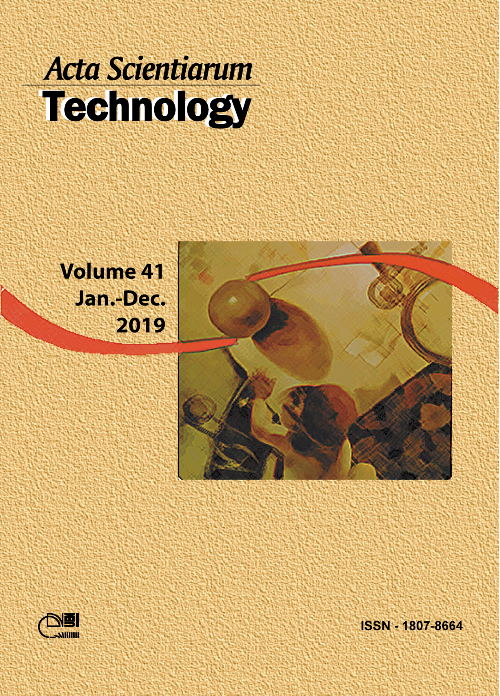Characterization of different microalgae cultivated in open ponds
DOI:
https://doi.org/10.4025/actascitechnol.v41i1.37723Keywords:
growth kinetic, composition, lipid profile.Abstract
Â
Microalga is one of the main sources of biomasses for the production of biofuels in the 21st century. Many labs and industries around the world are seeking for more productive strains and better cultivation models. The aim of this work was to evaluate the growth and kinetic parameters of six microalgae, and the moisture and lipid contents and fatty acids profiles of the biomasses harvested at the end of each cultivation. The microalgae were isolated in the Mid-Western Region of Brazil cultivated in open pond systems. It was observed that among the six microalgae used in this work, Pseudokirchneriella subcapitata presented the higher maximum specific growth rate (μmax) (0.12 day-1). The microalgae Coelastrum sp. and P. subcapitata were the ones with the highest lipid contents, with approximately 20% of dry mass. The main fatty acid accumulated in these conditions was palmitic acid, with percentages of 59 to 69% for all microalgae evaluated. Other factors that had influenced results from cultivations in open ponds were discussed here.
Â
Downloads
Downloads
Published
How to Cite
Issue
Section
License
DECLARATION OF ORIGINALITY AND COPYRIGHTS
I Declare that current article is original and has not been submitted for publication, in part or in whole, to any other national or international journal.
The copyrights belong exclusively to the authors. Published content is licensed under Creative Commons Attribution 4.0 (CC BY 4.0) guidelines, which allows sharing (copy and distribution of the material in any medium or format) and adaptation (remix, transform, and build upon the material) for any purpose, even commercially, under the terms of attribution.
Read this link for further information on how to use CC BY 4.0 properly.



















8.png)




